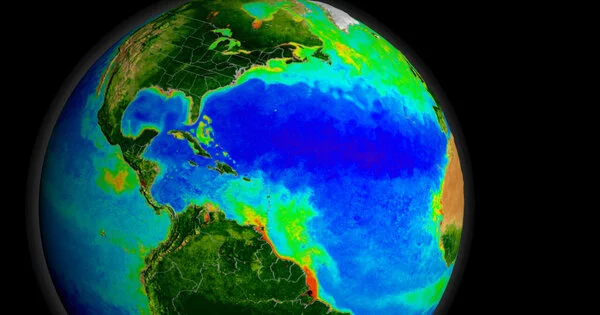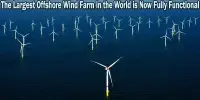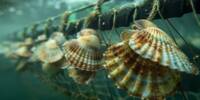For the first time, scientists have incorporated the diel cycle into a global ocean model to investigate its effects on phytoplankton. Their research looks into how the day/night cycle affects the biogeography and diversity of these primary producers.
Phytoplankton is the foundation of all life on Earth. Understanding how these photosynthetic organisms react to their ocean environment is critical for understanding the rest of the food web. Despite this, computer models of global ocean biogeochemistry typically do not include the day/night (diel) light cycle, despite the fact that it is critical for photosynthesis in the ocean’s primary producers.
For the first time, scientists from the Marine Biological Laboratory’s (MBL) Ecosystems Center incorporated the diel cycle into a global ocean model to investigate its effects on phytoplankton. Their research, which was published in the journal Global Ecology and Biogeography, is the first to look into how the day/night cycle affects the biogeography and diversity of these primary producers.
The model provided 15 simulated phytoplankton types with natural light and dark cycles over the global ocean. It was then compared to a control simulation that used the same plankton model but was illuminated with light averaged over 24 hours. The researchers wanted to know how diel light cycles affected phytoplankton productivity and nutrient concentration dynamics.
This model contributes to advancing our fundamental understanding of how the ocean works, adding that as scientists improve their ocean models, they may be able to use them to investigate potential climate change solutions while minimizing unintended consequences.
Vallino
The simulated phytoplankton had different cell sizes and were divided into two groups based on two broad ecological strategies. “Gleaners” simulated smaller cells with high nutrient affinity (meaning they could capture nutrients from the water column even if those nutrients were in low quantities) but slow growth, while “opportunists” simulated larger cells with higher maximum growth rate but low nutrient affinity (meaning they did better in nutrient-rich water). These were simulations of real phytoplankton based on parameters from lab cultures.
The researchers found that the diel cycle did indeed matter to the simulated phytoplankton.
“We know that a lot of traits of different phytoplankton are based on the day/night cycle. Some dinoflagelletes go deeper [in the water column] to get more nutrients and then go up to photosynthesize. Some store carbon during the day, so they can use it at night,” says Ioannis Tsakalakis, MBL postdoctoral researcher and first author on the paper.

The model revealed that diel cycles are associated with higher concentrations of limited nutrients, implying that at lower latitudes (?40° to 40°), the simulated opportunists outnumbered the gleaners. This includes phytoplankton such as diatoms. This mechanism became less important at higher latitudes, where the effects of the seasonal light cycle were stronger than the day/night cycles.
If scientists don’t understand how phytoplankton get their energy as primary producers at the bottom of the food web, it’s difficult to draw conclusions about the interactions of the rest of the global ocean food web – all the way up to humans.
So why has no one included the diel cycle before?
The global ocean is huge, and so are the models that represent it. To grapple with the complexities of what happens in the ocean, modelers often simplify certain processes. Typical models incorporate only seasonal light shifts rather than adding the more fine-grained details of the day/night cycle. This is mostly a computational decision, says MBL Senior Scientist Joe Vallino, senior author on the paper. “If you’re not resolving fine time detail, in general, [the models] run faster.”
“You’re pushing against the hardware constraints,” says Vallino. “You don’t want to have a 10-year simulation take 10 years to simulate.”
However, as climate change progresses, understanding how the ocean works becomes increasingly important in understanding how global warming and increased carbon dioxide affect it.
“This model contributes to advancing our fundamental understanding of how the ocean works,” Vallino says, adding that as scientists improve their ocean models, they may be able to use them to investigate potential climate change solutions while minimizing unintended consequences.
“Being able to predict how phytoplankton distribution will change will have consequences higher up the food web,” says Vallino. “If you don’t get that base change right, you won’t get anything above it.”
















